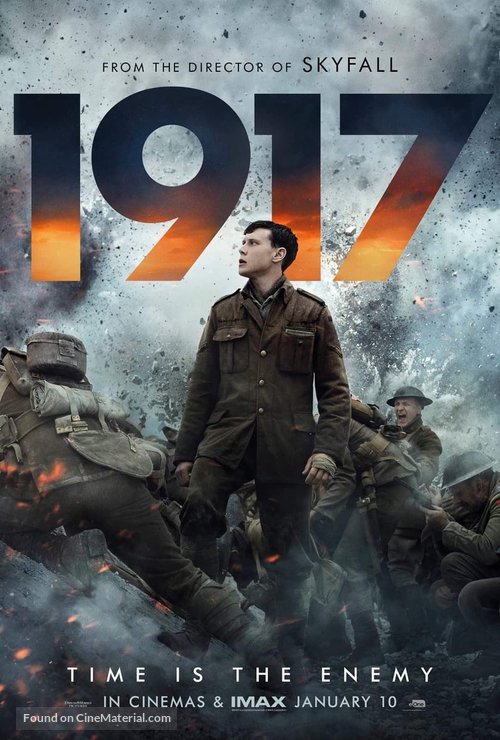
Time is the enemy.
The tagline from 1917
1917 is the incredible film from Sam Mendes about two friends tasked with delivering an important message to save a battalion..
Presented in one single take, or two depending on whether you count some unconscious hours as a cut, this film is a modern testament to stellar film-making.
The Plot
1917 centres around two friends stationed near the front line in world war one France. They are given the near-impossible task of taking an urgent order through no-man’s-land to the Front where a batallion of 1,600 men are about to run into a German-laid trap. Of course that is unless these two friends can get there to warn them in time.
The story takes us, every single step of the way, through some of the most brutal, and at times beautiful, war-time landscapes. Along the way they meet other people who happen across their path, some friendly; some hostile, but neither stop them on their forward momentum to deliver their message of utmost importance.
My Thoughts
I’d heard from a few different people that this film was really good and demanded being experienced in a cinema. In all honesty I maybe wouldn’t have gone to see this, at least not on its weekend of release, however, my lady wanted to watch it so we went this weekend.
It was absolutely incredible.
The first thing that I couldn’t help but notice was the impressive single camera shot opening (no visible editing cuts), which I only realised about five minutes in.
But that opening shot was more than just an opening shot – it became apparent to me that this was going to be a film that would be experienced in a single, unflinching scene!
(I used to read up on films before seeing them when I was going through my media-student phase. But I much prefer it now, where I know next to zero about films before I go in – save for perhaps what is in the trailers.)
Yes there would have been cuts throughout the film* – no film is going to be physically filmed in one single take, at least none have been to my knowledge. However, using some clever techniques, many of which no-doubt inspired by Alfred Hitchcock’s 1948 film Rope, director Sam Mendes has managed to pull off the same one-take effect but on a much grander scale.

Beautifully shot
The cinematography in this film was stunning to say the least – thanks to the film’s cinematographer Roger Deakins. From the close-ups of decaying corpses of both human and animal alike – half buried in the rubble and mud of battles past – to the wide-shot bold imagery taken against very grand battle-torn vistas.
This film managed to bring to the screen all manner of brutal war imagery. Some I could have perhaps imagined, but also definitely some I could never have imagined.
And the lighting! The lighting effects in some of these scenes just made my jaw drop, at least in my mind. One particular time was the beginning of the night-time sequence with the flares going up overhead. It looked both gorgeous and like something straight out of hell at the same time – not that the two have to be mutually exclusive.
There were certain shots I still remember now very vividly, which I thought I would share here. I will create a gallery below when I can get a hold of the shots I want to share – probably when the film is released on DVD/Blu-Ray.
An Emotional Story
The story of 1917 is a simple one at heart – deliver this message over there before this time. However, woven into that story is an incredibly strong beating heart that I couldn’t help but be affected by.
The way that we remain in these people’s immediate vicinity, and experience everything they do, couldn’t help but draw me into their lives. And the stories they tell about their homes and their backstory, helped to fill them out more as flesh and blood people – making their hardships even tougher to endure with them at times.
Other Notes
Main characters aside, I have to say that Andrew Scott was a stand-out performance for me. He is always enjoyable to watch on screen after I first saw him as Moriarty on TV’s Sherlock. And his role as the laid-back, battle-hardened Lieutenant Leslie was enjoyable too. Albeit if only for the 5 – 10 minutes that you actually see him.
Thomas Newman’s score was incredible as always, and easy identified with certain sounds I felt reminiscent of from his earlier work on Shawshank Redemption and American Beauty.
I couldn’t help but think of this film in terms of a computer game, with it’s varying ‘Levels’ and mini ‘Boss Fights’. I don’t mean this as a way to make the film’s techniques sound like a gimmick – after all games are true contenders in effective narrative storytelling nowadays, even more so than many films that are released. Just look at The Last Of Us, to name just one.
*I could be completely wrong about this, so apologies if I am – I am making some assumptions in this post.